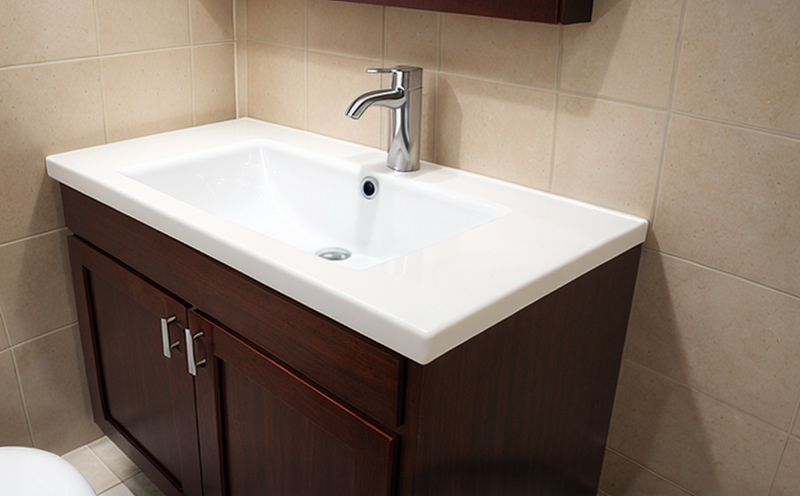BS EN ISO 178 Flexural Strength Testing of Bathroom Plastics
The British Standard (BS), European Standard (EN), and International Organization for Standardization (ISO) 178 method is a recognized standard used to determine the flexural strength properties of materials. This service pertains specifically to testing bathroom plastics, which are essential components in modern sanitary ware products.
The testing process involves subjecting specimens cut from bathroom plastic parts to controlled bending until failure occurs. The flexural modulus and flexural strength are measured based on the maximum load-bearing capacity before fracture or yielding. This information is crucial for product development and quality assurance, ensuring that materials meet stringent safety standards.
Accurate testing of these properties ensures compliance with international norms such as BS EN ISO 178:2019. Compliance is vital not only to satisfy regulatory requirements but also to guarantee the reliability and durability of bathroom plastics under varying environmental conditions. For instance, bathroom fixtures often face harsh conditions like temperature fluctuations, humidity, and chemical exposure.
The testing setup typically includes a universal testing machine equipped with appropriate grips for gripping the test specimen. Specimens are usually prepared from actual bathroom plastic parts to maintain realism in the testing environment. Preparing specimens correctly is critical because improper preparation can lead to inaccurate results that do not reflect real-world performance.
Once prepared, the samples undergo rigorous testing under controlled conditions. The machine applies a precise bending load at a specified rate until failure occurs. The data collected includes peak load and deflection values which are then used to calculate flexural strength and modulus of elasticity. These parameters help manufacturers understand how their products will behave in various applications.
Testing results provide valuable insights into the mechanical behavior of bathroom plastic materials under stress conditions. Understanding these properties aids engineers in optimizing design iterations, selecting appropriate raw materials, and ensuring long-term product performance. Compliance with BS EN ISO 178 ensures that manufacturers meet global quality standards set by industry experts.
Accurate testing also plays a crucial role in identifying potential weaknesses within the material structure which could otherwise lead to premature failure or reduced lifespan of bathroom fixtures. By adhering strictly to this standard, companies can enhance their reputation for producing reliable and high-quality products that meet customer expectations.
Applied Standards
The British Standard (BS), European Standard (EN), and International Organization for Standardization (ISO) 178 method is widely recognized across the globe as a reliable means of assessing the flexural strength properties of materials. This standard provides clear guidelines on specimen preparation, testing procedures, and data analysis.
- BS EN ISO 178:2019 specifies the procedure for determining the flexural properties of plastics using four-point bending tests.
- The standard ensures uniformity in test methods among different laboratories worldwide.
- It includes detailed instructions on specimen dimensions, loading rates, and temperature control during testing.
Scope and Methodology
The scope of this service covers the application of BS EN ISO 178 flexural strength testing specifically to bathroom plastics. Bathroom plastic parts include items such as shower heads, faucets, bidet seats, and toilet seats.
The methodology involves preparing specimens from actual bathroom plastic parts according to specified dimensions outlined in BS EN ISO 178:2019. The testing apparatus used is a universal testing machine capable of applying controlled bending loads at various rates.
During the test, the specimen is clamped between two grips on the machine. A constant load is applied until failure occurs due to bending. Critical measurements include peak load and deflection values recorded during the test run. These figures are used to calculate flexural strength and modulus of elasticity of the material.
After each test, detailed reports are generated that summarize the findings along with recommendations for improving product performance based on the results obtained. Compliance with this standard guarantees consistency in testing methods across different laboratories globally.





